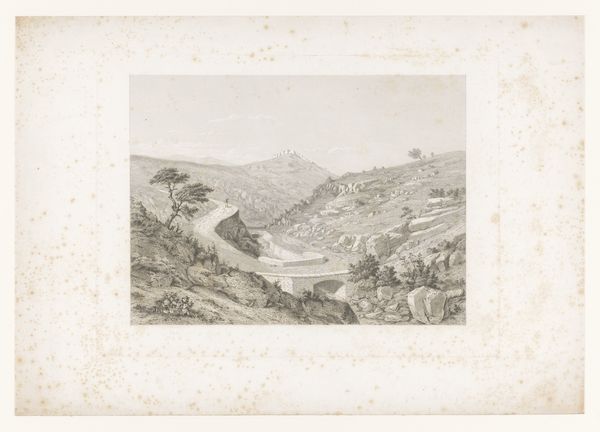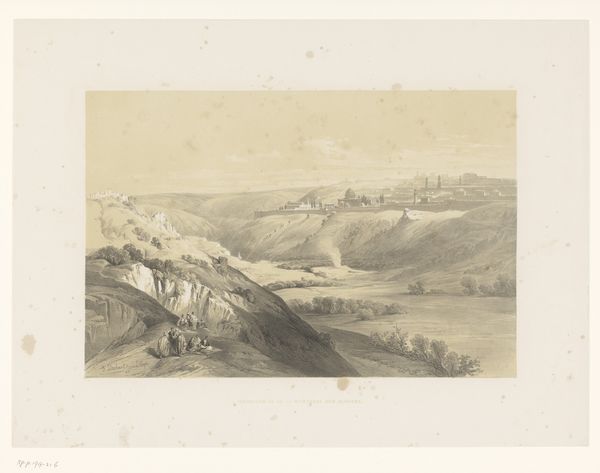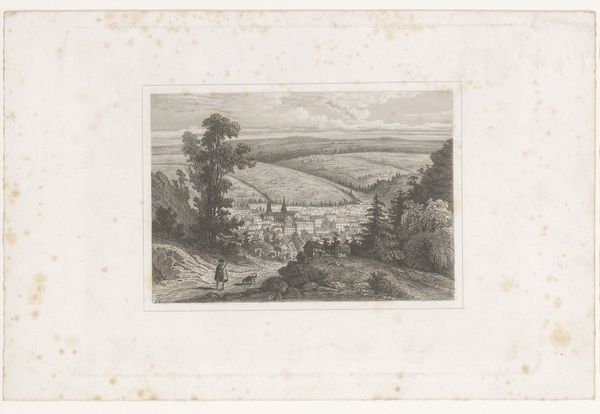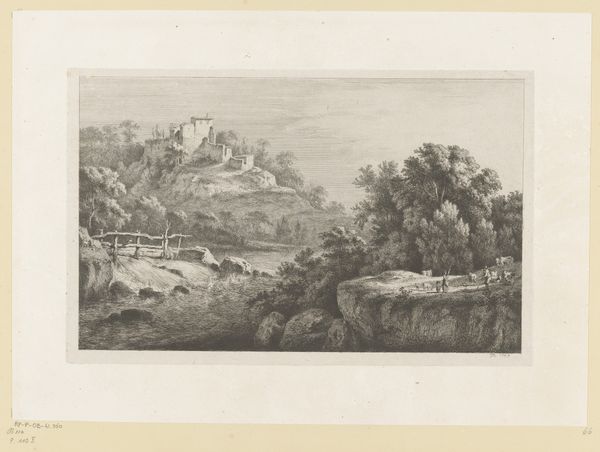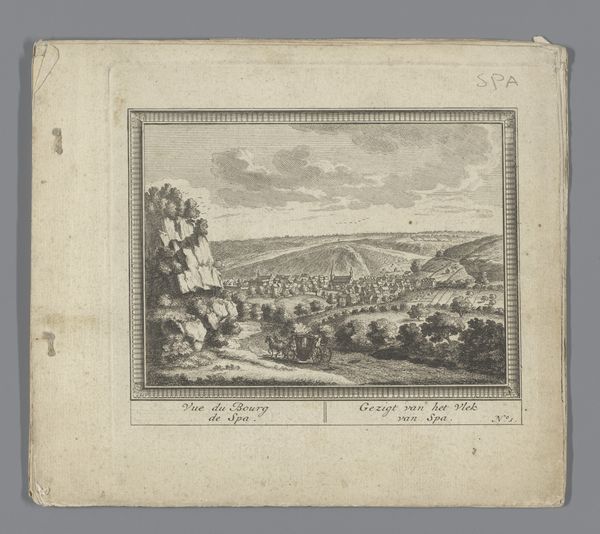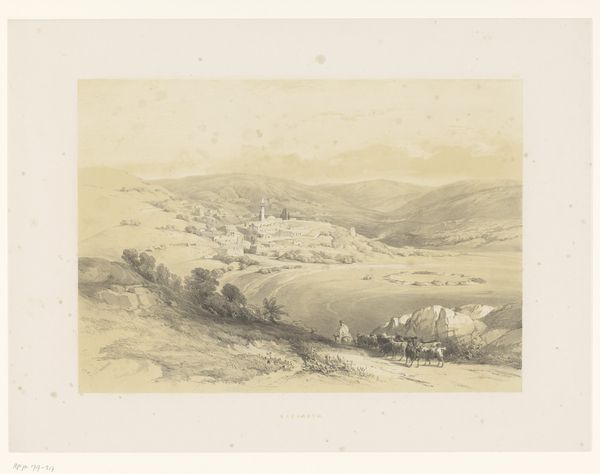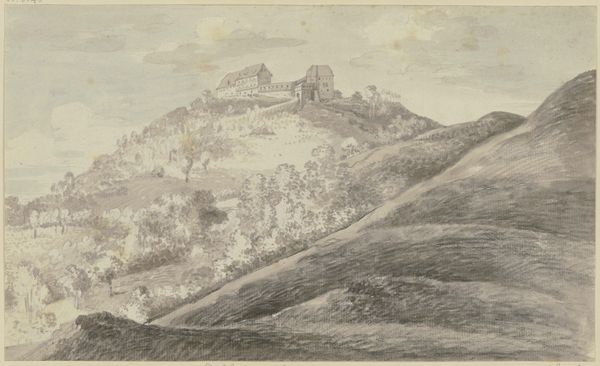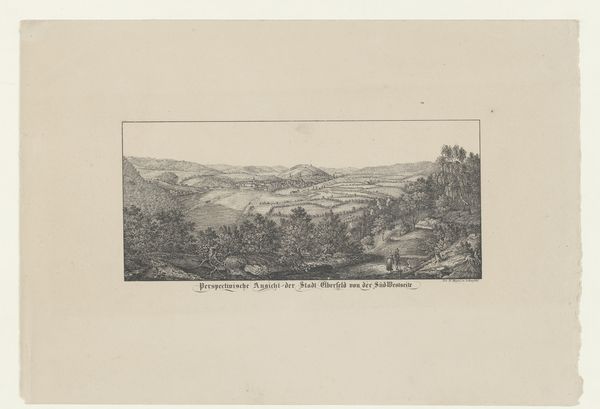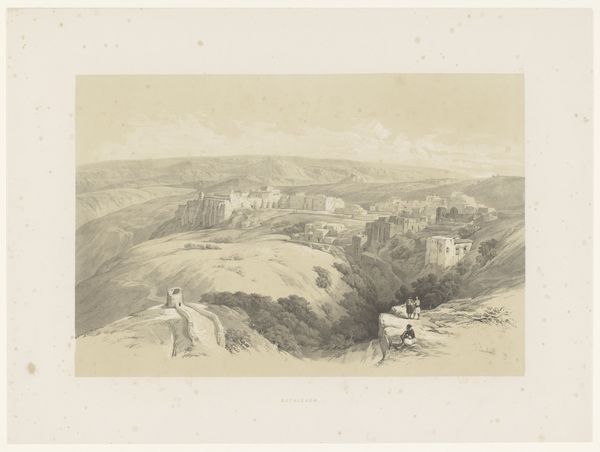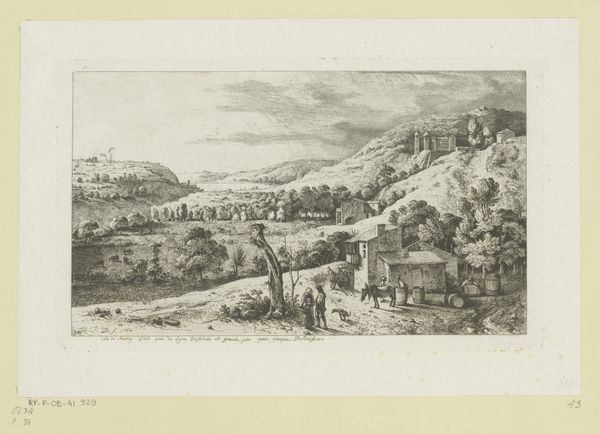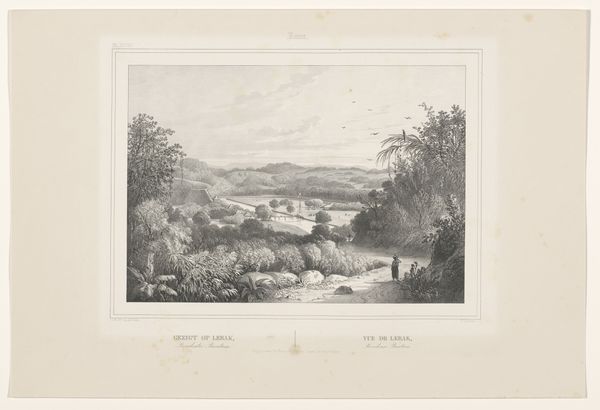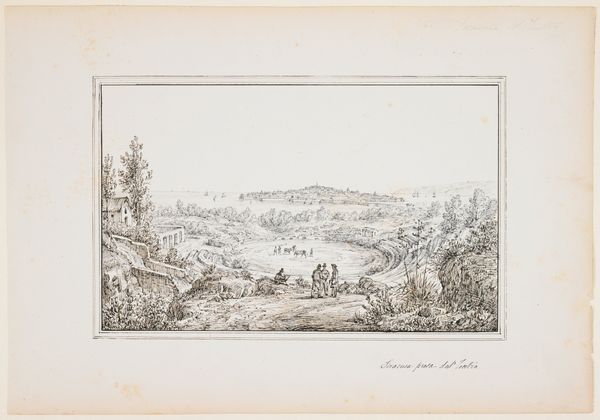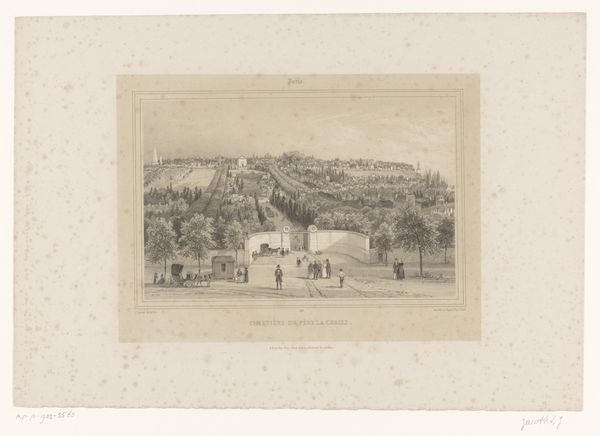
View of the Mount of Olives, from Malerische Ansichten aus dem Orient, gessamelt auf der Reise Sr. Hoheit des Herrn Herzogs Maximilian in Bayern nach Nubien, Aegypten, Palaestina, Syrien und Malta (Picturesque views from the Orient, assembled on the journey of his Serene Highness, the Duke Maximilian in Bavaria, to Nubia, Egypt, Palestine, Syria and Malta) 1839
0:00
0:00
drawing, lithograph, print, etching, architecture
#
drawing
#
lithograph
# print
#
etching
#
landscape
#
romanticism
#
architecture
Dimensions: Sheet: 28 13/16 × 42 1/2 in. (73.2 × 108 cm)
Copyright: Public Domain
Editor: So this is Heinrich von Mayr’s “View of the Mount of Olives” from 1839, made with etching and lithography. It has such a serene feeling to it, even though the landscape itself looks quite harsh. How do you interpret this work? Curator: Well, let's think about what it means to create a "picturesque view" of the Orient in 1839, particularly focusing on the Mount of Olives. It's part of a larger Romantic project of idealizing and framing landscapes that often overlooked the realities of colonialism and the people living there. Does that framing change how you perceive that sense of serenity? Editor: I see what you mean. It’s like the artist is presenting this place as this untouched, almost biblical scene, when the reality was certainly much more complex. Curator: Exactly! Consider the Duke Maximilian in Bavaria, whose journey this print series documents. What's his role in constructing this specific view of Palestine for a European audience? The print becomes a kind of mediated experience of place. What's included and what’s left out? Editor: It makes you wonder about the choices that were made—which details were emphasized, and which were conveniently omitted. It shifts the feeling, it feels much more constructed now. Curator: The architectural details and sparse vegetation draw our eye, certainly, but within what power structures were these landscapes being documented and consumed? Editor: That’s something I hadn’t really considered before. It really underscores the importance of questioning the context in which these images are created. Curator: It's a crucial reminder to consider art as not just aesthetically pleasing but deeply intertwined with social and political narratives. This print serves as an intriguing visual record that invites questions about seeing and being seen.
Comments
No comments
Be the first to comment and join the conversation on the ultimate creative platform.
